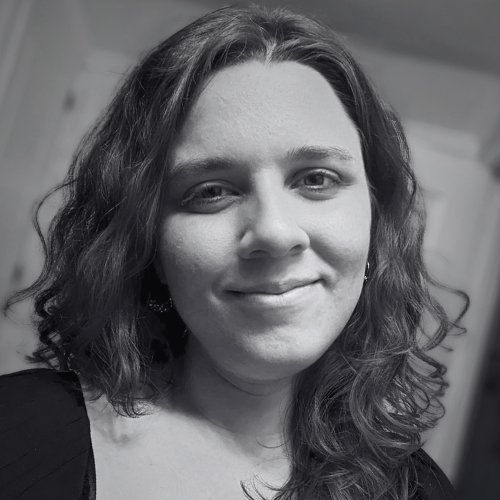Math Foundations VIII | Pre-Algebra Part 2
Placement Information
Placement Process
One critical factor for restful learning is the proper placement of students. If you are unsure which level is the best fit for your student, reach out to the instructor you are considering. Once registered, anticipate contact regarding placement evaluations from instructors by May 15th and throughout the summer. Students must be registered to enter the placement process. Early placement exams may allow time for tutoring or additional review based on the outcomes. See more about placement evaluations in our Student-Parent Handbook.
Math Placement Process
For registered students, please anticipate contact regarding placement evaluations from instructors by May 15th and throughout the summer. Students must be registered in a math course to receive a placement assessment. Math classes have a detailed and specific placement process.
Read more about the math placement process here.
Watch the math placement process video with our department chair, Dr. Fransell Riley, here.
See the Math Scope and Sequence here.
Required Materials:
Books and supplies are not included in the purchase of the course.
Course Textbook
-
Reveal Math, Course 3, Vol. 1
- ISBN: 9781265823900
-
Reveal Math, Course 3, Vol. 2
- ISBN: 9781265824631
Sections may require:
- Binder: 1-inch 3 ring
- Digital tablet: Choose from: Wacom Intuos, Huion, XP-Pen, or other.
- **Scientific Calculator: Examples: **TI, Sharp, other
- Multiple sharpened pencils, erasers
- **Notebook Paper **
- **Free web accounts: **ziteboard.com (our virtual classroom)
- Multiple times throughout the year, there may be a need to print handouts, worksheets, or manipulatives

Mrs. Natalie Dignoti
[email protected]Natalie Dignoti earned a Bachelor's of Science in Elementary Education (Social Studies Cognate) and Master's of Arts in Cross-Cultural & International Education. After these studies, she taught at a charter school outside of Boston, Massachusetts. During her time there, she served in both 4th and 6th grade classrooms and as an after-school violin teacher. After 3 years, she and her husband moved to Bowling Green, Ohio to pursue graduate degrees. While there, she partnered with the university's College of Education to provide online math and reading intervention for students. She has also taught English Language Arts at a local homeschool cottage school and provided individual tutoring services in math and other subjects.
.png?cache=false)
Sandra Lewis
[email protected]Dr. Sandra Lewis holds a B.S. in Chemistry from The College of William and Mary, an M.S. in Chemistry, and a Ph.D. in Biology from Rice University. A passionate educator, she has spent the past 25 years homeschooling her six children and is currently continuing that journey with her youngest, now in high school. Dr. Lewis has also taught in both community college and private school settings, bringing her deep love of science and learning to a variety of students.
Known for her thoughtful, encouraging, and mastery-oriented approach, Dr. Lewis strives to create classes that are not only rigorous but also engaging and fun.
Some of her favorite things include God’s grace, spending time with her family, beach days, and enjoying a wide range of movies and music. She lives in Virginia with her husband Larry—her partner of 3*(20/2) +(12-0.5*16) years—along with several of their children and their two beloved Shih Tzus, Teddy and Poppy.
Quarter 1
- Laws of Exponents (include problems that require 4+ steps)
- Scientific Notation
- Operation with Scientific Notation (without converting to standard form)
- Terminating and Repeating Decimals
- Compare and Order Rational Numbers
- Roots
- Solve 3+ Step Equations and Advanced Equations (with fractions)
- The order in which topics are presented may vary according to instructor and course section.
Quarter 2
- Identify and Compare Functions
- Properties of Functions (linear and nonlinear)
- Dimensional Analysis (Create Conversions Factors)
- Solve Systems of Equations (using substitution and graphing)
- Determine the number of solutions in a system of equations
- Factor algebraic expressions
- The order in which topics are presented may vary according to instructor and course section.
Quarter 3
- Slope of a Line
- Direct Variation
- Slope Intercept Form
- Scatterplots
- Lines of Fit
- Two-way Tables
- Interpret qualitative graphs
- The order in which topics are presented may vary according to instructor and course section.
Quarter 4
- Similar Triangles (using proportions NOT SAS, SSS, ASA, etc)
- Angle Relationships and Parallel Lines
- Pythagorean Theorem and Converse
- Distance and Midpoint Formula
- TransformationsCongruence and Silimarity
- Volume of Cylinders, Cones, and Spheres
- The order in which topics are presented may vary according to instructor and course section.
![]() Computer: You will
need a stable, reliable computer, running with a processor with a speed of 1 GHz or better
on one of the following operating systems: Mac OS X with Mac OS 10.7 or later; Windows 8,
7, Vista (with SP1 or later), or XP (with SP3 or later). We do not recommend using an
iPad or other tablet for joining classes. An inexpensive laptop or netbook would be much
better solutions, as they enable you to plug an Ethernet cable directly into your computer.
Please note that Chromebooks are allowed but not preferred, as they do not support certain
features of the Zoom video conference software such as breakout sessions and annotation,
which may be used by our teachers for class activities.
Computer: You will
need a stable, reliable computer, running with a processor with a speed of 1 GHz or better
on one of the following operating systems: Mac OS X with Mac OS 10.7 or later; Windows 8,
7, Vista (with SP1 or later), or XP (with SP3 or later). We do not recommend using an
iPad or other tablet for joining classes. An inexpensive laptop or netbook would be much
better solutions, as they enable you to plug an Ethernet cable directly into your computer.
Please note that Chromebooks are allowed but not preferred, as they do not support certain
features of the Zoom video conference software such as breakout sessions and annotation,
which may be used by our teachers for class activities.
![]() High-Speed Internet Connection:
You will also need access to high-speed Internet, preferably accessible via Ethernet
cable right into your computer. Using Wi-Fi may work, but will not guarantee you the optimal
use of your bandwidth. The faster your Internet, the better. We recommend using a connection
with a download/upload speed of 5/1 Mbps or better. You can test your Internet connection here.
High-Speed Internet Connection:
You will also need access to high-speed Internet, preferably accessible via Ethernet
cable right into your computer. Using Wi-Fi may work, but will not guarantee you the optimal
use of your bandwidth. The faster your Internet, the better. We recommend using a connection
with a download/upload speed of 5/1 Mbps or better. You can test your Internet connection here.
![]() Webcam: You may
use an external webcam or one that is built in to the computer. Webcam Recommendations:
Good (PC only) | Best (Mac and PC)
Webcam: You may
use an external webcam or one that is built in to the computer. Webcam Recommendations:
Good (PC only) | Best (Mac and PC)
![]() Headset: We recommend
using a headset rather than a built-in microphone and speakers. Using a headset reduces the
level of background noise heard by the entire class. Headset Recommendations: USB | 3.5mm
Headset: We recommend
using a headset rather than a built-in microphone and speakers. Using a headset reduces the
level of background noise heard by the entire class. Headset Recommendations: USB | 3.5mm
![]() Zoom: We use a web
conferencing software called Zoom for our classes, which enables students and teachers to
gather from around the globe face to face in real time. Zoom is free to download and easy
to use.
Zoom: We use a web
conferencing software called Zoom for our classes, which enables students and teachers to
gather from around the globe face to face in real time. Zoom is free to download and easy
to use.  To
download Zoom:
To
download Zoom:
- Visit zoom.us/download.
- Click to download the first option listed, Zoom Client for Meetings.
- Open and run the installer on your computer.
- In August, students will be provided with instructions and a link for joining their particular class.
![]() Scanner: In this
class, students frequently submit homework assignments by scanning pages from their workbooks.
Students and/or their parents should have easy access to a scanner and the ability to use it.
Scanner: In this
class, students frequently submit homework assignments by scanning pages from their workbooks.
Students and/or their parents should have easy access to a scanner and the ability to use it.
Step 1
Step 2
Step 3
Step 4
Explore our courses!
First, read the available course descriptions, noting prerequisites, target grades, and course objectives. If you think your student is prepared for the course, go ahead and register. After registration, a placement assessment may be provided to students, depending on the course and the student's previous enrollment with Scholé Academy. Registration is finalized when the student's placement assessment has been returned by the course instructor with placement confirmation.
All Courses | By Grade
Read the Student-Parent Handbook.
Please take careful note of our teaching philosophy, our technology requirements, our school policies, the parent agreement, and the distinctions between our grade levels.
Double-check the course section dates and times.
Make sure they don't conflict with other activities in your schedule or other courses you are purchasing. Our system will not catch double-bookings!
You're ready to add course selections to your cart!
Our Assistant to the Principal will be in touch with you after your enrollment to help you with next steps, including any placement evaluations that may be required for your course selections.
This registration will be finalized when the student's placement assessment has been returned by the course instructor with placement confirmation.
